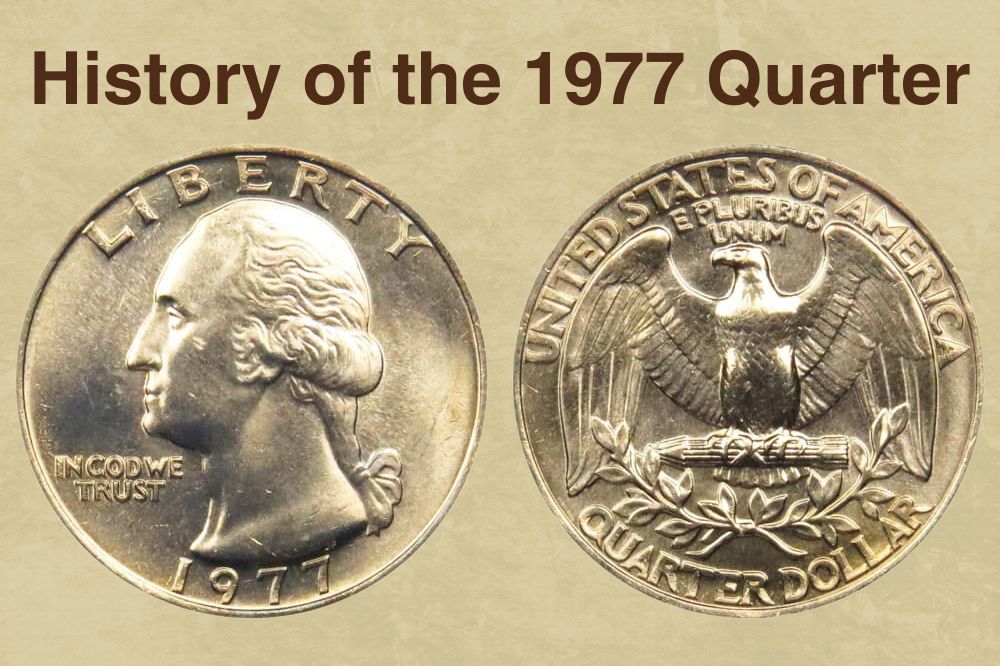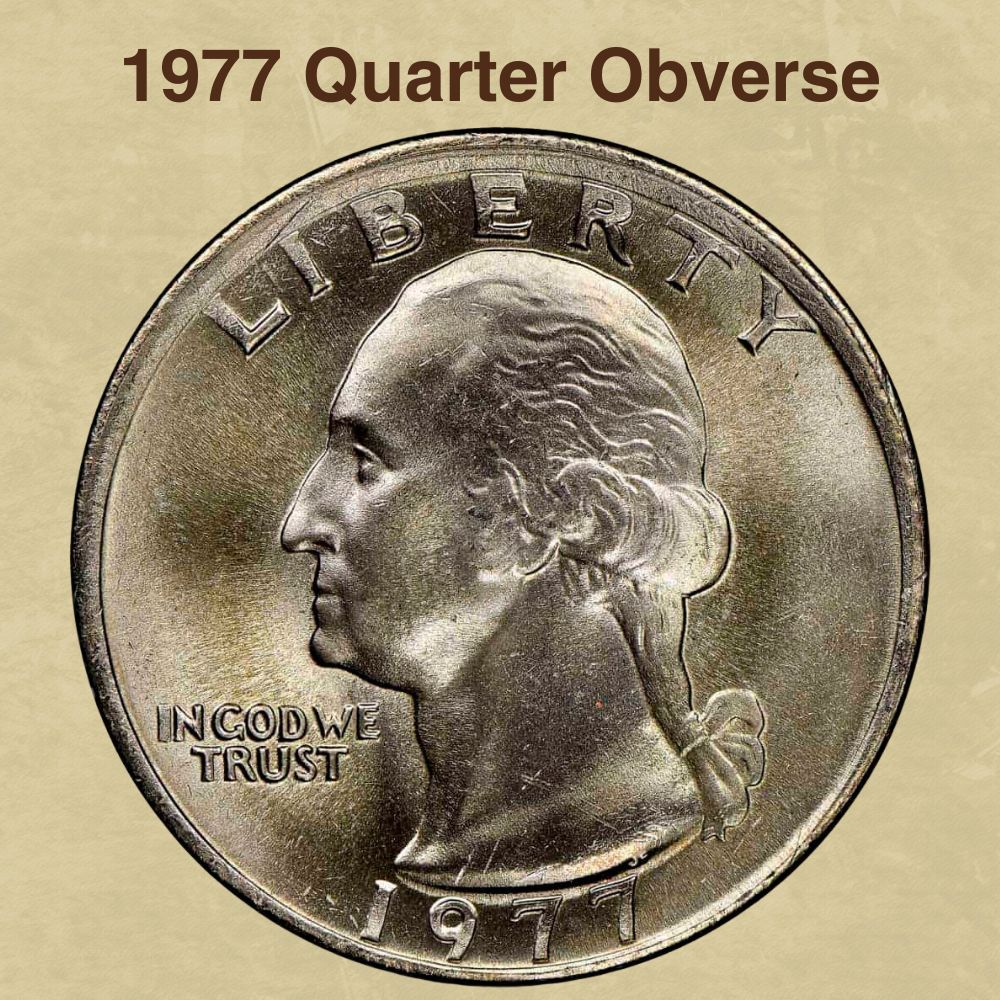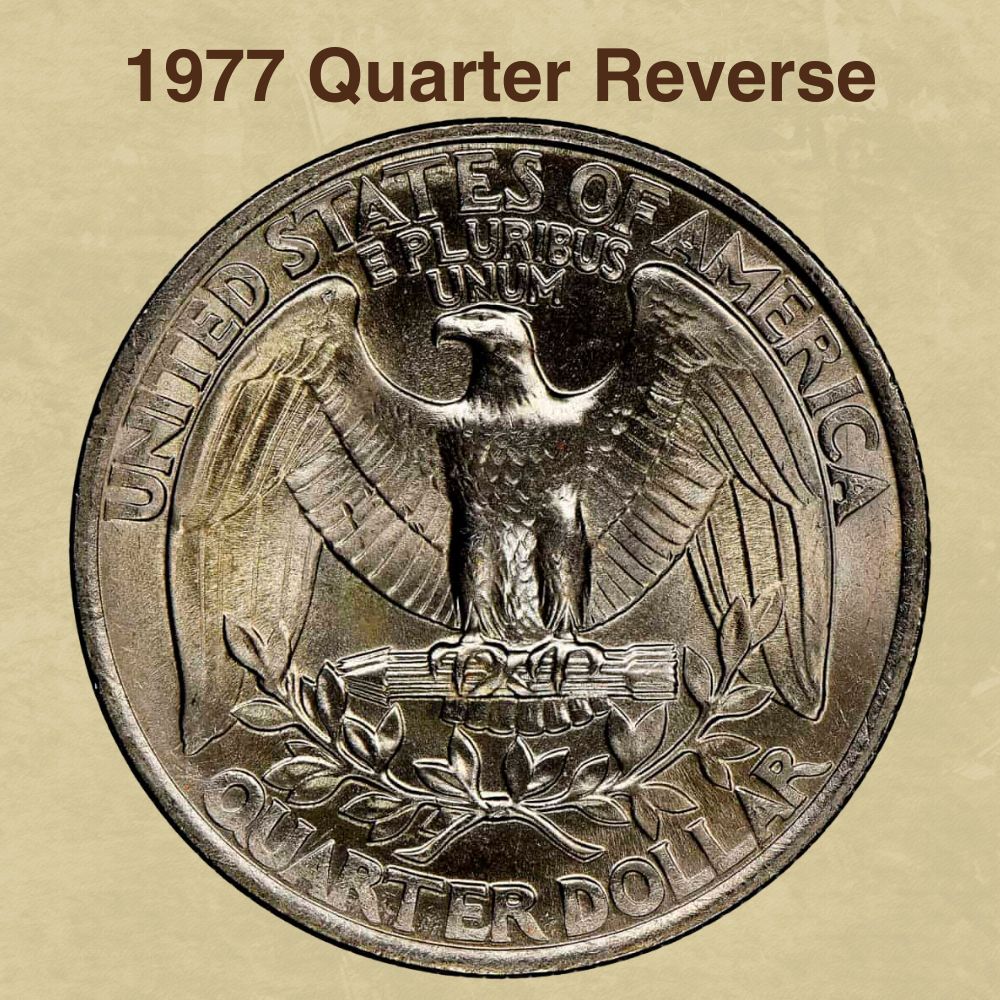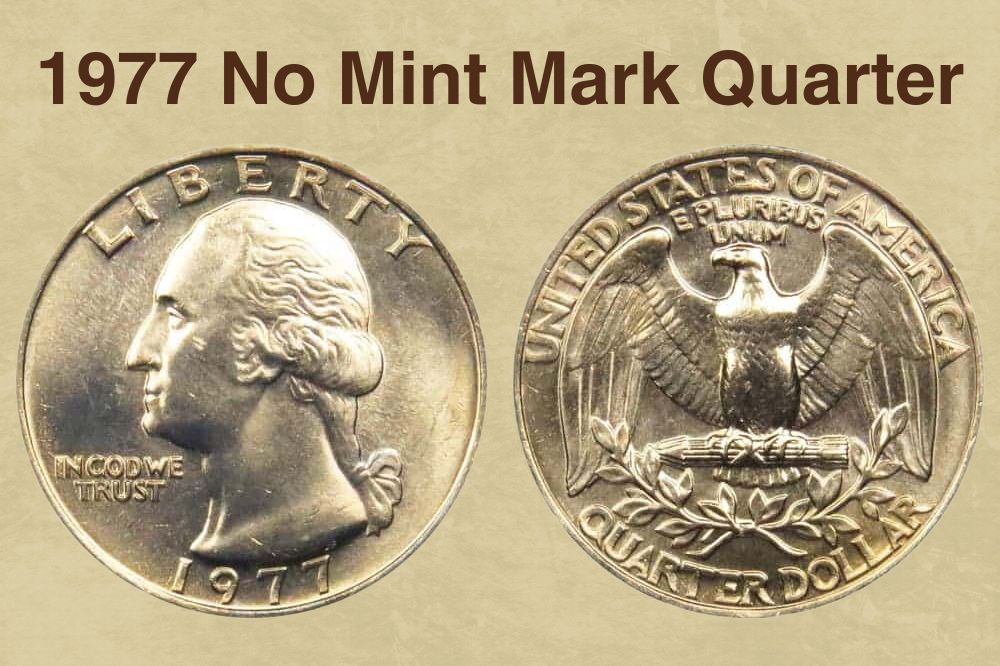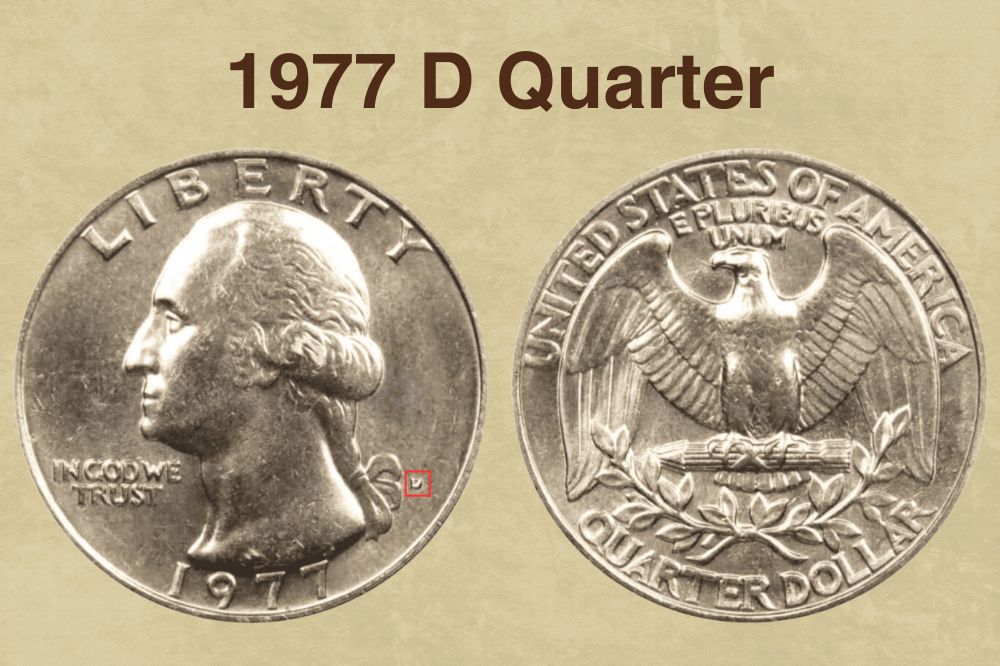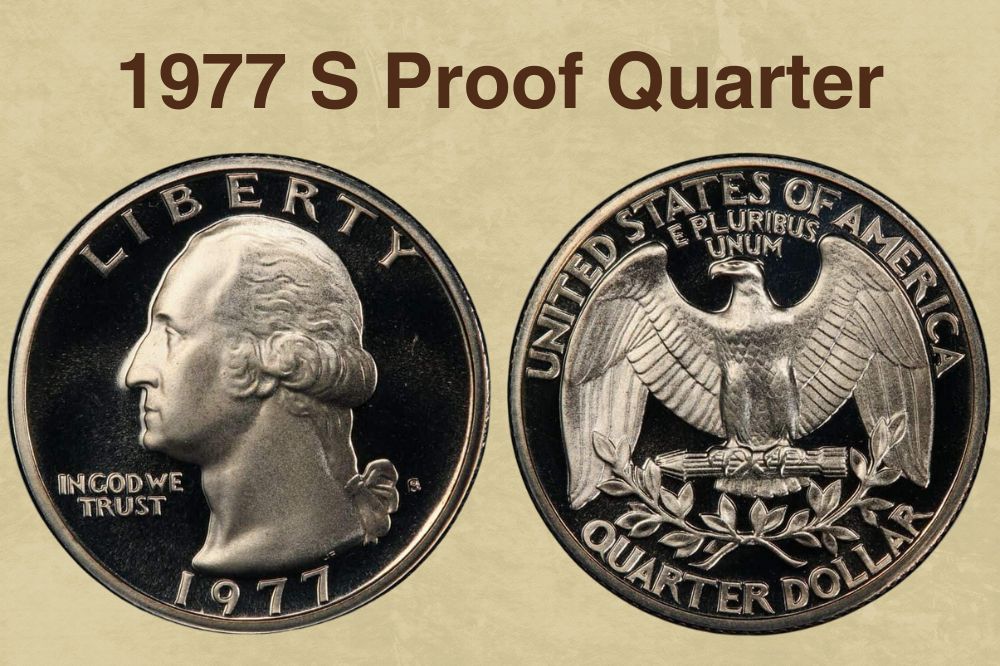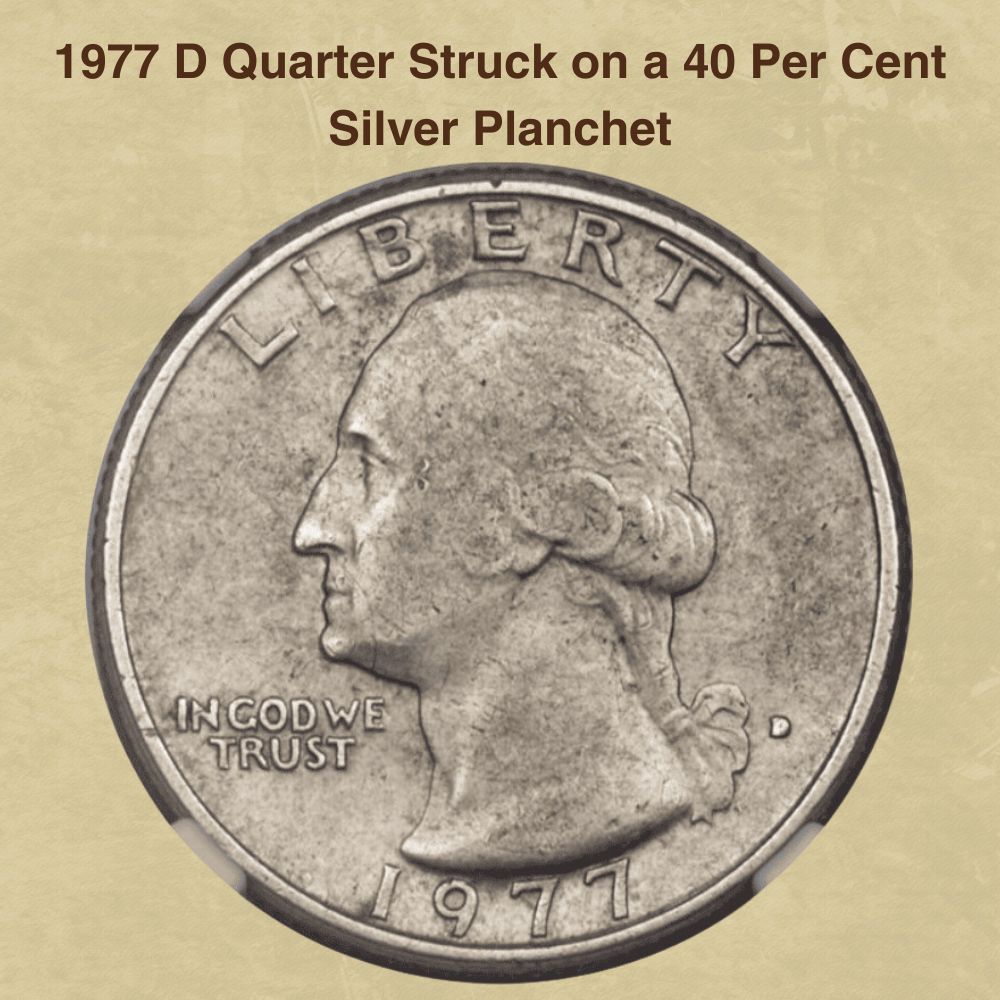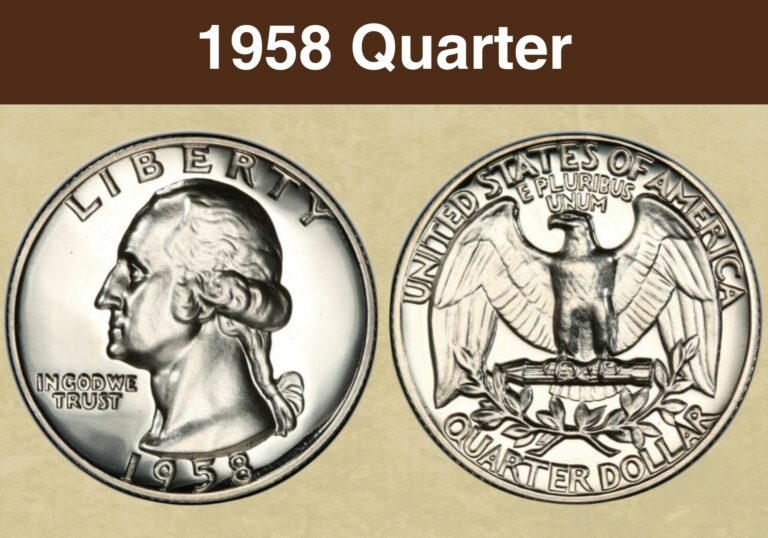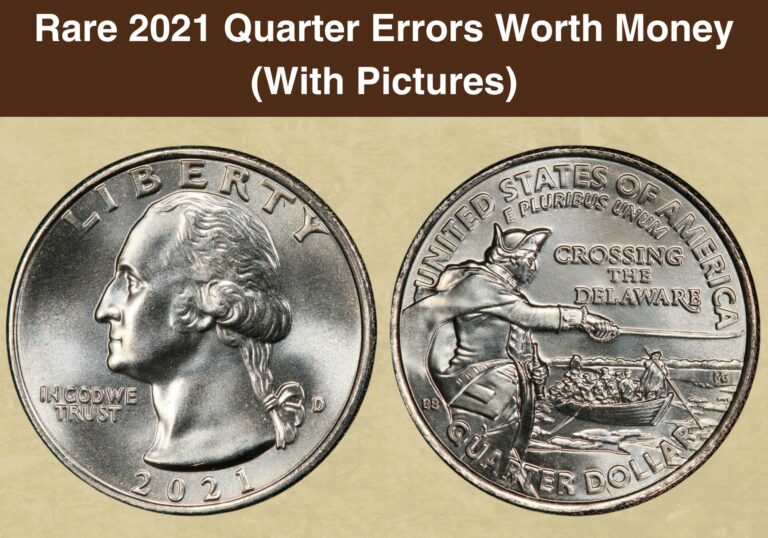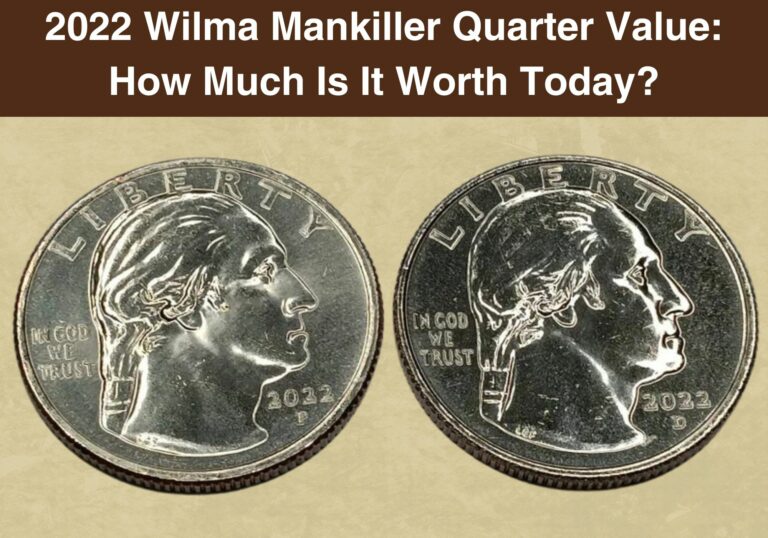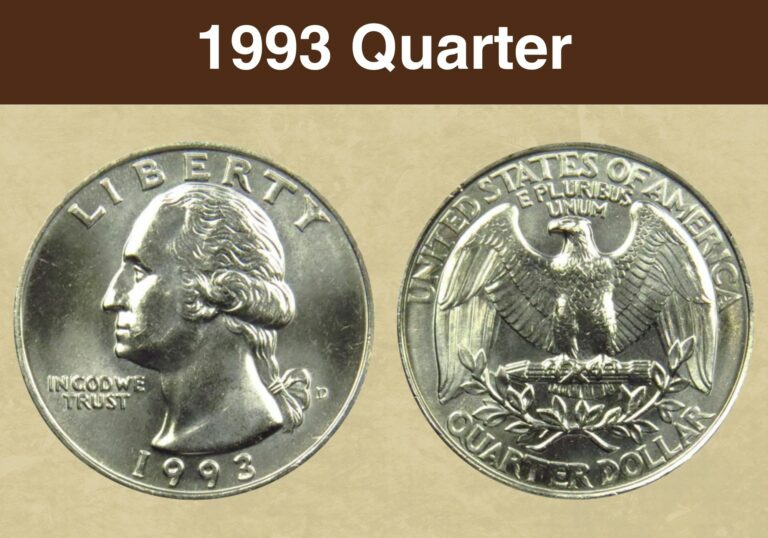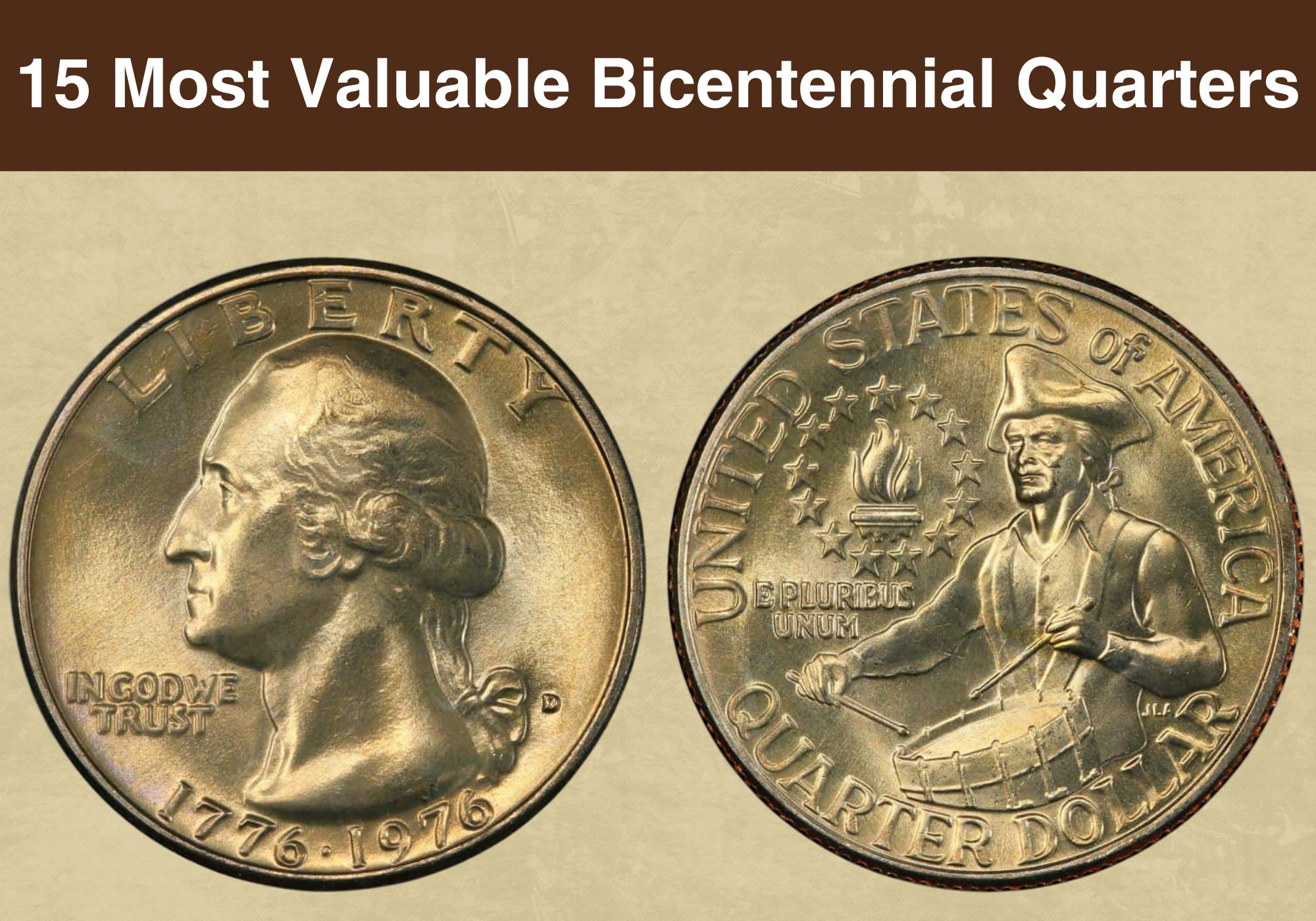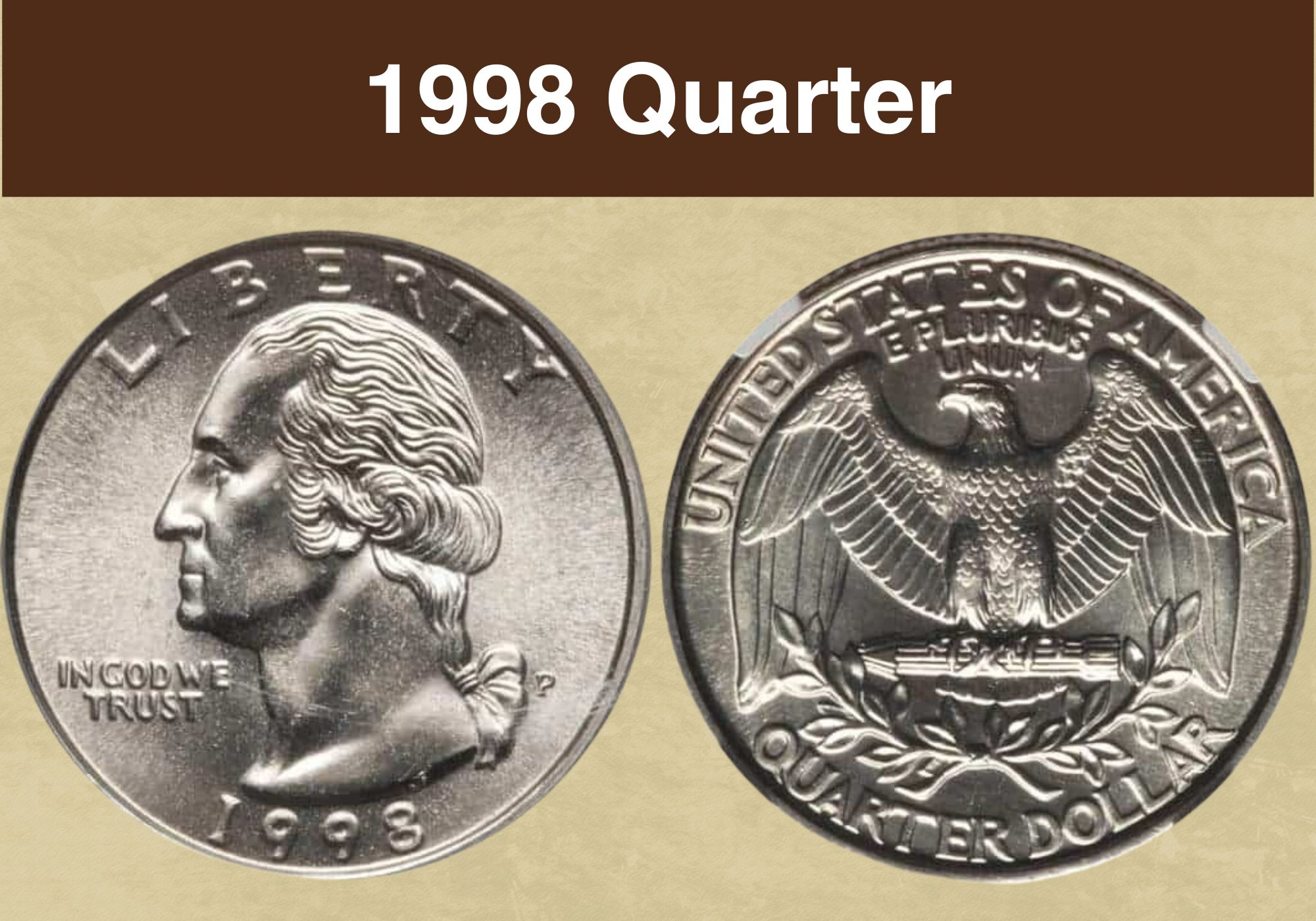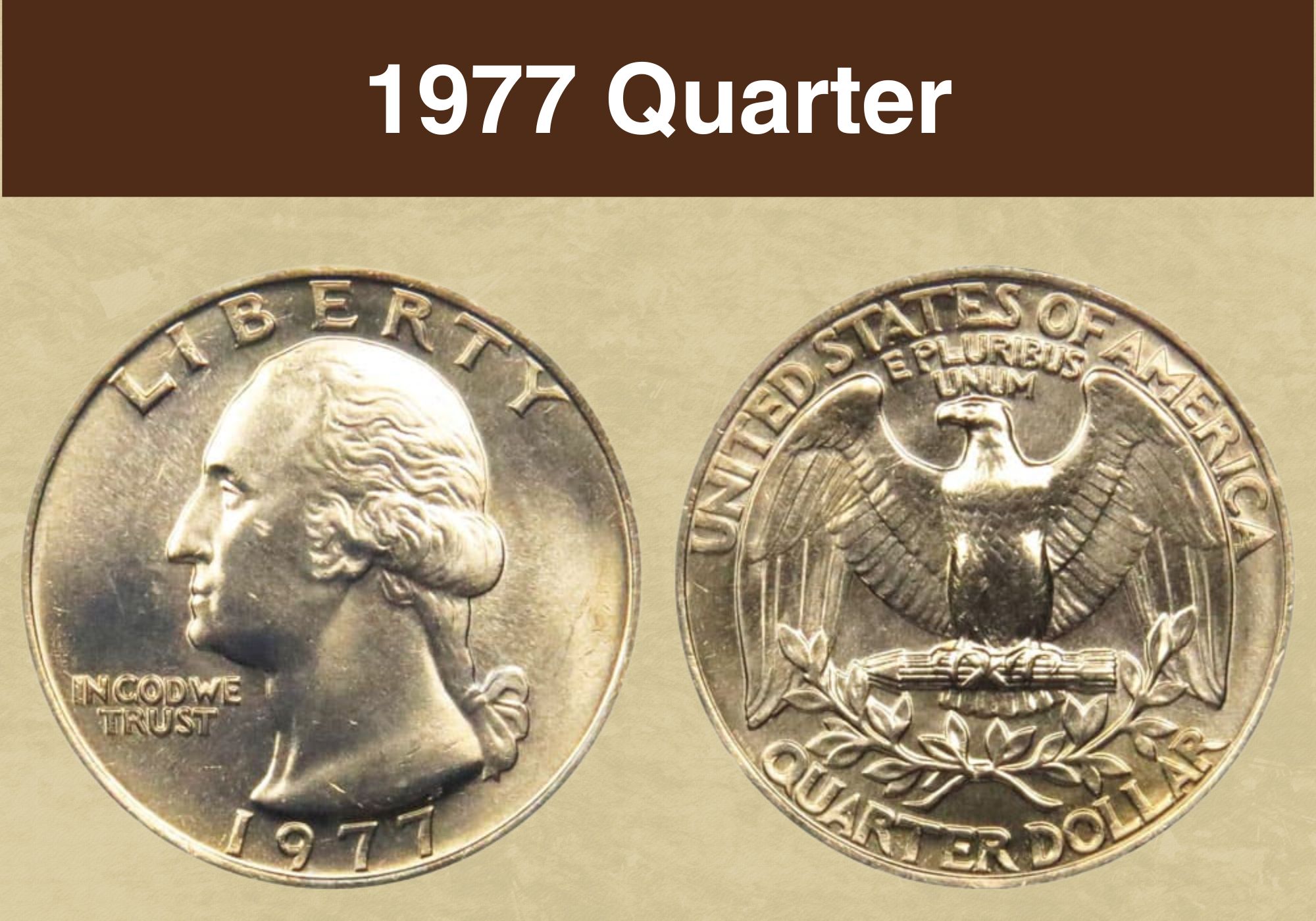
Coin Value Contents Table
The quarters struck in 1977 are known as Washington quarters. The first of the series were minted in 1932, and they’re still going strong today. But is the 1977 mintage valuable?
That’s what we’re here to discover! We’re going to explore the 1977 quarter value across the different mint marks and coin grades. And we’ll learn more about its design and history along the way.
Ready to find out more? Then read on!
1977 Quarter Value Chart |
||||
| Mint mark | MS60 | MS63 | MS65 | MS68 |
| 1977 No Mint Mark Quarter Value | $1 | $2 | $10 | $10,000 |
| 1977 D Quarter Value | $3 | $6 | $20 | $1,400 |
| PR60 | PR65 | PR68 | PR70 | |
| 1977 S Proof Quarter, Deep Cameo Value | $2 | $5 | $7 | $45 |
History of the 1977 Quarter
1976 had seen special quarters produced to mark the bicentenary of American Independence. These were made in both silver and clad varieties. But 1977 saw a return to the standard clad quarters which had first been minted in 1965.
The move away from silver quarters had been prompted by the rising price of silver. This had been pushing up production costs and led to an increase in coin hoarding by the public.
The 1965 quarters instead had a copper core, with the silver color coming from a cladding of copper and nickel. The change to new metal meant some modifications to the design were required. The harder metal meant that the relief needed to be lowered to achieve an acceptable level of detail.
But in other respects, the quarters of 1965 (and 1977) looked very similar to those that had gone before.
The obverse carried the familiar portrait of George Washington, which gave rise to the nickname “Washington quarters”. And the reverse had the same image of an eagle with outstretched wings.
In 1977, business strike coins – those intended for circulation – were struck at the Mint facilities in Philadelphia, West Point, and Denver. The San Francisco Mint facility struck proof dimes for collectors.
It was the first year the West Point facility struck quarters. Unfortunately, since neither the Philadelphia nor West Point facilities used mint marks, it’s impossible to distinguish between coins from the two locations.
Also read: Top 13 Most Valuable State Quarters Worth Money
Features of the 1977 Quarter
The Obverse of the 1977 Quarter
The image on the 1977 quarter will be familiar to any American. It portrays the nation’s first president, George Washington. And it is still appearing on quarters to this day.
Washington had been depicted on the obverse of all quarters since 1932. But if you have the chance to compare a 1932 quarter with one from 1977, you’ll see some subtle differences.
These are the result of the relief of the portrait having been lowered in 1965. This was necessary to maintain a clean strike when the planchets were changed from silver alloy to copper clad in copper and nickel.
The portrait is the work of an American sculptor named John Flanagan. But it was the subject of some debate at the time, and has continued to be controversial over the years.
It had originally been intended to mark the bicentenary of Washington’s birth with a half dollar struck for a single year. A committee had been set up to oversee the bicentenary celebrations. They selected a portrait of Washington by Laura Gardin Fraser for the commemorative coin.
Later, though, plans changed. It was decided that Washington should be honored with a coin in continuous production. And his portrait would appear on the quarter, rather than the half dollar.
As it was no longer a bicentenary coin, the task of deciding on the design passed to the US Treasury. And its Secretary, Andrew W. Mellon, preferred the image of Washington by Flanagan.
The Committee protested, and when Mellon stepped down from his post they put their case to his successor, Ogden L. Mills. Mills, however, decided (perhaps wisely) not to enter the fray, and Flanagan’s portrait prevailed.
It was based on an earlier bust by the French sculptor, Antoine Houdon. It shows Washington in profile, facing left, and sporting a roll of hair that didn’t appear on Houdon’s sculpture.
The word “LIBERTY” appears above Washington’s portrait, curving parallel to the coin edge. To the left of the portrait is the motto “IN GOD WE TRUST”. The date is at the bottom.
Quarters struck in Denver or San Francisco are also inscribed with a mint mark – a “D” or an “S” respectively. If the coin has a mint mark, it will appear to the right of Washington’s portrait.
The Reverse of the 1977 Quarter
The reverse of the 1977 quarter carries the dramatic image of an eagle with wings outstretched. Like the obverse, it was the work of John Flanagan.
But the stylized representation led some to question whether it was really the bald eagle, the traditional symbol of the USA, or some other species. The New York Times consulted an ornithologist, who concluded that the bird was indeed a bald eagle.
The words “E PLURIBUS UNUM” appear immediately above the eagle’s head. The motto is Latin and means “From the many, one”, a reference to the union of the states.
Above it, the country name arches to follow the curve of the coin edge. The denomination is at the bottom, also inscribed parallel to the coin edge.
Other Features of the 1977 Quarter
The 1977 quarter appears silver, but it’s actually made of a combination of silver and copper. The core is copper, and it’s clad in an alloy of three quarters copper and a quarter nickel.
Clad coins are slightly lighter than the earlier silver quarters, weighing 5.67 grams compared to 5.75 grams. The dimensions are the same however, with both varieties measuring 24.3 millimeters in diameter.
This YouTube video from Mint Miser shows the 1977 quarter in detail, and provides information on one very valuable error coin.
1977 Quarter Grading
| # | Grade |
|---|---|
| 1 | Basal State-1 |
| 2 | Fair |
| 3 | Very Fair |
| 4, 5, 6 | Good |
| 7, 8, 10 | Very Good |
| 12, 15 | Fine |
| 20, 30 | Very Fine |
| 40 | Extremely Fine |
| 50 | About Uncirculated |
| 60 | Mint State |
| 65 | Mint State |
| 70 | Mint State |
Please check our grading guides to know your coin scale, It’s the necessary step to know the exact value of your coin.
Check out now: How to Grade Washington Quarter?
1977 Quarter Value Guides
1977 No Mint Mark Quarter Value
1977 saw quarters without mint marks being produced at two different Mint facilities, Philadelphia and West Point. It was the first year the West Point facility had produced quarters. But sadly, the absence of a mint mark means there’s no way to tell them apart from Philadelphia quarters.
The total mintage from both facilities was 468,556,000. The PCGS, an independent coin grading agency, estimates that about 164 million of those survive today.
Coins are graded on a 70-point scale, with 1 used for a coin in the worst condition and 70 for a perfect example. Mint state coins are those which have never been circulated, so have minimal wear. They’re graded with the prefix “MS” and start at MS60.
The PCGS estimates that almost 5 million of the surviving 1977 no mint mark quarters are graded MS60 and above. And almost a million of those are “gem” coins, graded at least MS65.
That means you can get hold of a very attractive coin without having to spend a lot of money. A 1977 quarter with no mint mark graded MS60 is worth only about a dollar. And even a gem quality MS65 example is worth only about $10.
But the very finest coins are much more valuable. The second best grade available is MS67+. The PCGS has certified three 1977 no mint mark quarters at that level, and values them at $2,600 apiece.
But the best-in-class is a single coin graded MS68. And that’s worth a cool $10,000.
1977 D Quarter Value
Denver quarters can be identified by the “D” on the obverse. It appears just to the side of Washington’s braid.
Denver struck well over 256 million dimes in 1977. And the PCGS estimates that around 90 million survive at all grades. There are about 30 million mint state coins, and almost 2.7 million gem examples.
Just as with no mint mark dimes, then, you can get a great looking coin for a small outlay. Values range from $3 for a coin graded MS60 to $20 for one graded MS65.
Values breach three figures at MS67. A 1977 Denver dime at that level is worth around $350.
Coins graded MS68 are much rarer, but not as rare as those without mint marks. The PCGS has certified only one, but clearly expects there to be many more out there. It places the value at a relatively modest $1,400.
1977 S Proof Quarter Value
The proof quarters struck in San Francisco in 1977 are very attractive coins. They were made using specially crafted dies, and struck on highly polished planchets.
The proofs were aimed at the collecting market, and over 3.25 million were produced. While this number was far lower than business strike coins, proofs were always marketed as collectors’ items. And that means they were carefully stored away after purchase.
As a result, the PCGS estimates that well over 2.6 million survive. They are all, by definition, graded at least PR60 (the “PR” stands for “proof”). And most of those are gem quality, PR65 and above.
They all carry the “deep cameo” designation. That’s used for coins that have a dramatic and visually appealing contrast between reflective and frosted parts of the design.
So they’re beautiful coins, which would grace any collection – but they’re not valuable. An example graded PR60 is worth only a couple of dollars. And even a flawless PR70 deep cameo is worth only around $45.
Also read: Top 16 Most Valuable Modern Quarters Worth Money
Rare 1977 Quarter Error List
1977 D Quarter Struck on a 40 Per Cent Silver Planchet
1976 saw a number of different varieties of quarters struck to celebrate the bicentenary of American independence. These included quarters struck on planchets made of 40 per cent silver.
One of those planchets apparently got stuck in a coin hopper at the Denver Mint facility. And it found itself mixed in with the cupronickel clad planchets used for quarters the following year.
The result was an error coin – a 1977 Denver quarter struck on a 40 per cent silver planchet. This type of Mint error is known as a transitional error, and it’s one of the rarer kinds. That makes it very valuable to collectors.
This particular coin wasn’t in the best condition. It had been improperly cleaned, and while it was authenticated by the coin graders at the NGC, they didn’t award it a grade. It nevertheless sold at auction for almost $5,000.
1977 D Quarter Struck on a 1-Cent Planchet
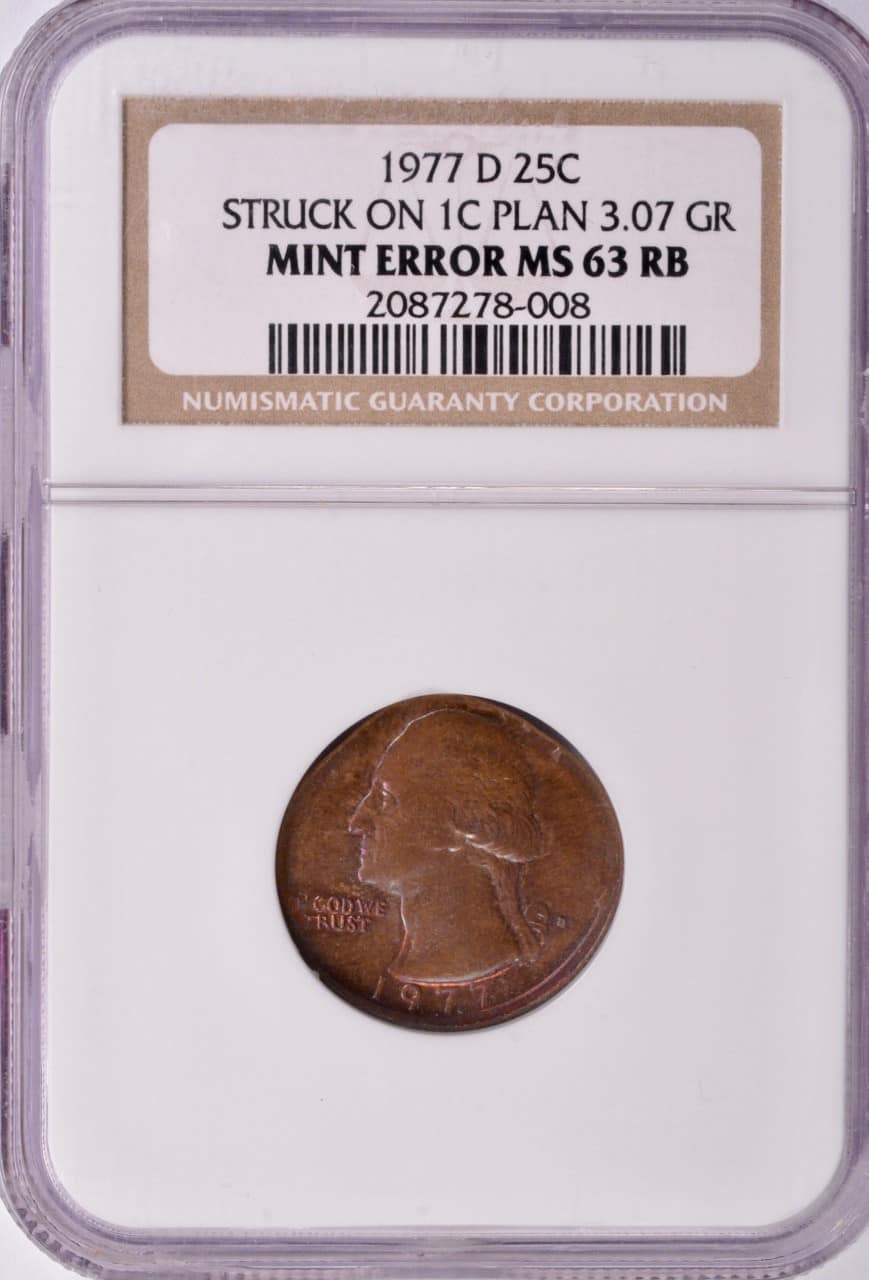
The example above wasn’t the only time a 1977 Denver quarter was struck on the wrong planchet. A 1-cent planchet also somehow got into the coin hoppers.
The resulting coin was graded MS63 red and brown by the NGC. The smaller planchet meant that the top of the design was missing.
It achieved a price of $1,100 at auction.
1977 No Mint Mark Quarter, Broadstruck
Some types of Mint error attract a lower premium. One of the 1977 quarters struck at either Philadelphia or West Point was broadstruck.
This means that it wasn’t held in place properly by the collar when it was struck. That in turn allowed the metal to spread out beyond the standard coin diameter. And it left a blank area around the edge.
The quarter was in good condition, graded MS66 by the NGC. It sold at auction for $65.
Check out this YouTube video from Couch Collectibles for examples of these and other Mint errors amongst 1977 quarters.
Also read: 17 Most Valuable Quarter Errors Worth Money
Where to Sell Your 1977 Quarter ?
Now that you know the value of your coins, do you know where to sell those coins online easily? Don’t worry, I’ve compiled a list of these sites, including their introduction, pros, and cons.
Check out now: Best Places To Sell Coins Online (Pros & Cons)
FAQs
How much is a 1977 quarter worth today?
The value of an individual quarter depends primarily on its condition.
Coins that have been circulated and have signs of wear and tear are generally worth only their face value. Coins with a Mint error, however, can be worth more.
Coins in the very finest mint state condition are more valuable. But the most attractive coins aren’t necessarily the rarest.
A 1977 deep cameo proof quarter graded a perfect PR70 is worth only around $50. That’s because there are a lot of them around.
But there’s only one 1977 proof quarter without a mint mark graded MS68. And as the sole finest example of its kind, that coin is worth about $10,000.
What quarter is worth $5,000?
One of the quarters struck at Denver in 1977 featured a rare type of Mint error, known as a “transitional error”.
These occur when the Mint changes the planchet used for a particular denomination. Sometimes coins from the previous year get stuck in the hoppers. And the result is a coin struck on the wrong planchet for that mintage.
The Denver transitional error quarter was ungraded, and had been improperly cleaned. But the NGC had certified it as the real deal. And when it was presented at auction, it sold for just shy of $5,000.

